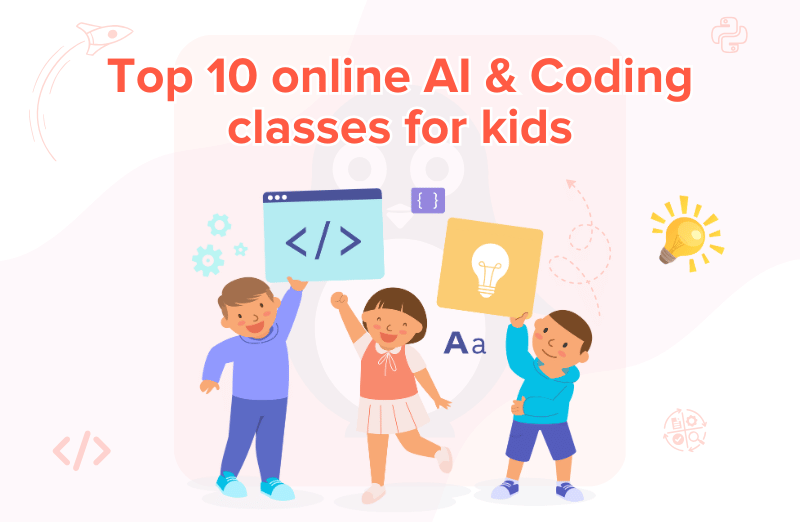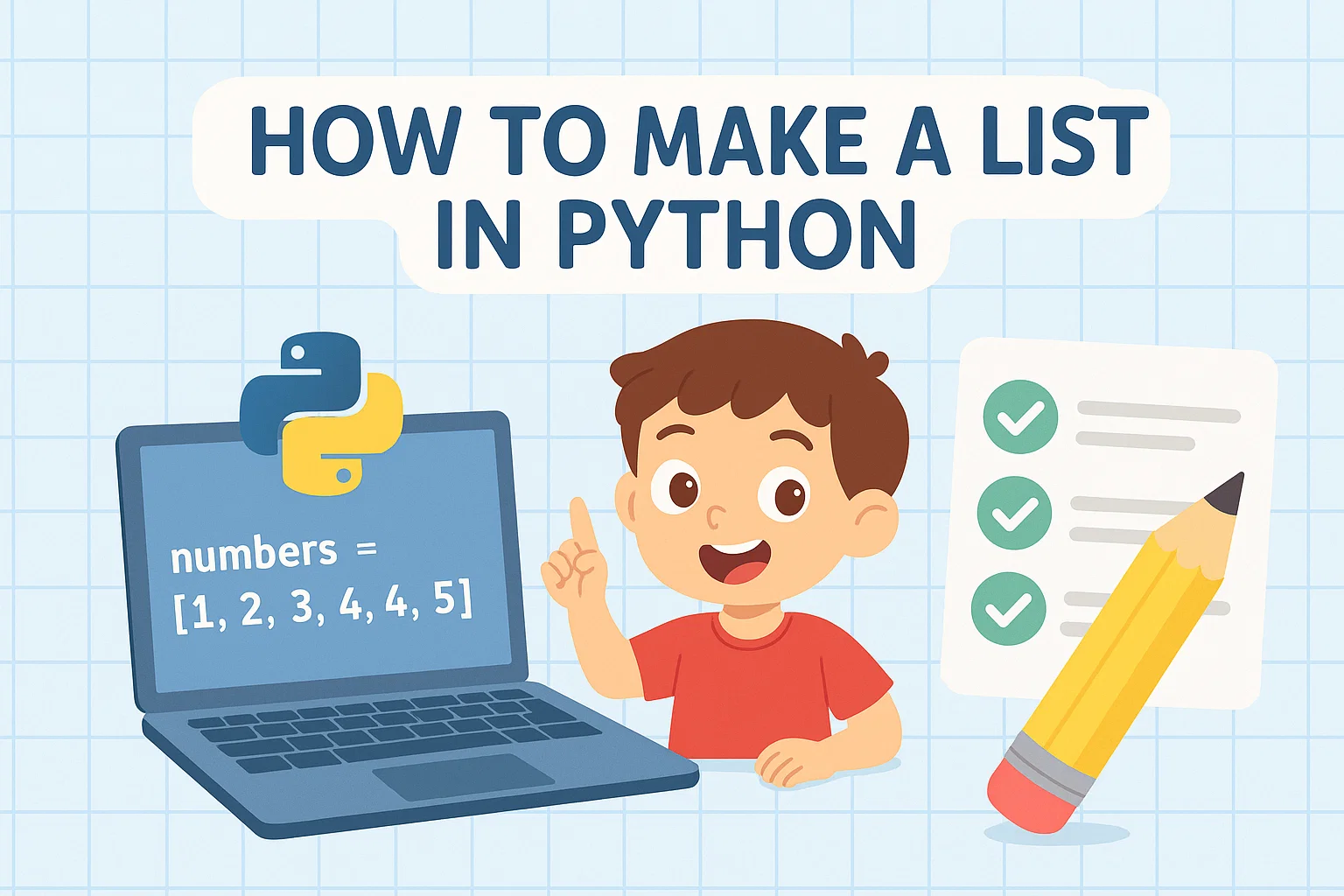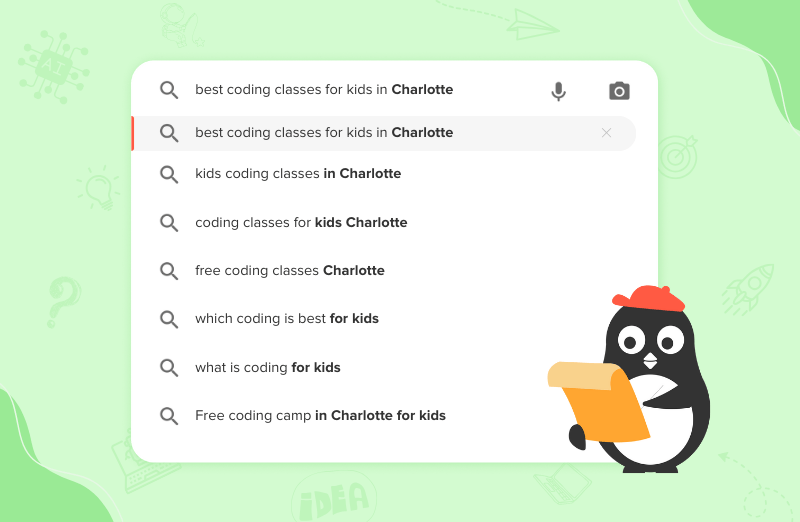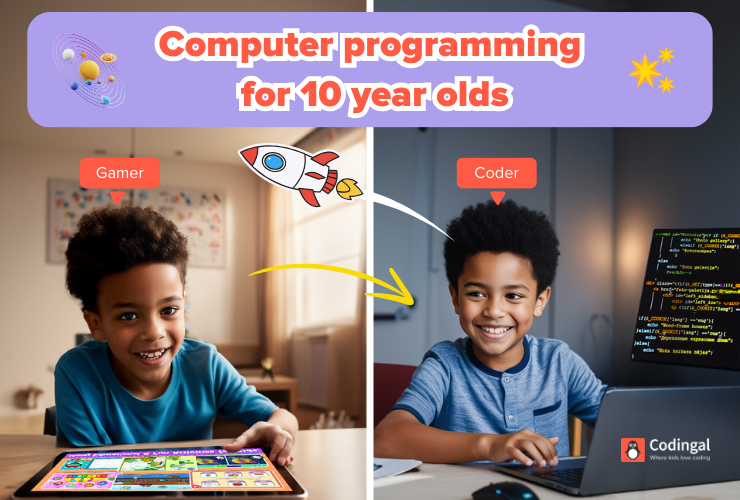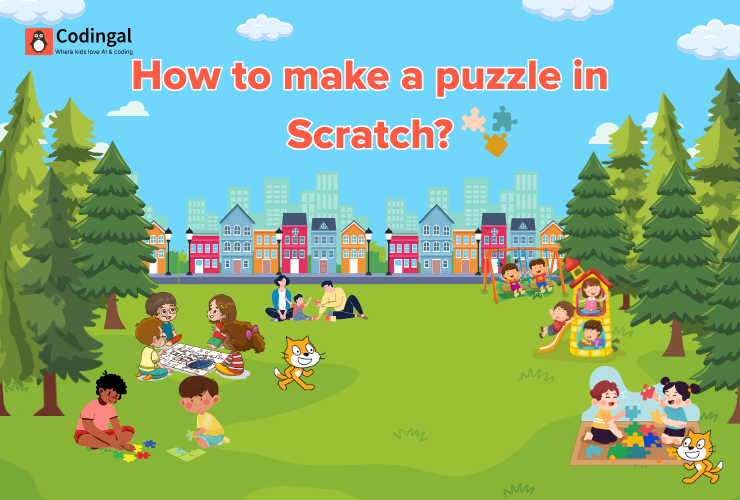Table of Contents
Why trust this list? At-a-glance comparison How to choose the right class Key takeaways FAQ SectionWhy trust this list?
- Built for busy parents: Quickly compare 10 standout platforms—pricing, age fit, teaching style—all distilled from 40+ hours of research and hands-on testing.
- Skill-building focus: Every pick nurtures creativity, logic, and problem-solving—“coding helps children develop critical thinking skills that will benefit them in school and the future” (Fractus Learning).
- Live, self-paced, & camp formats covered: From free block-coding tutorials to premium AI camps, you’ll find an option that matches your child’s schedule and learning style.
- Cited facts, not hype: Each section includes a direct quote or statistic from trusted sources so you can verify claims instantly.
- Bias check: Yes, Codingal is our own platform—but we’ve placed it alongside nine worthy alternatives so you can decide what’s best for your learner.
At-a-glance comparison
| # | Platform | Best For | Live / Self-paced | Price Range* | Key Stat |
|---|---|---|---|---|---|
| 1 | Codingal | Project-based K-12 mastery | Live 1-on-1 & small group | $0 – $25/class | 500k students (2025) |
| 2 | Code.org | Absolute beginners | Self-paced + classroom | Free | 100 M+ Hour of Code users |
| 3 | Tynker | Creative coders 5-18 | Self-paced + live camps | $0 – $30/mo | 60 M+ kids reached |
| 4 | Khan Academy | Independent tweens | Self-paced | Free | 18 M monthly learners |
| 5 | Scratch | Ages 8-16, community sharing | Self-paced | Free | 92 M projects shared |
| 6 | CodeMonkey | Game-based logic | Self-paced + classroom | $0 – $29/mo | 400+ challenges |
| 7 | CodeWizardsHQ | Small-class rigor | Live weekly | $149–$199/course | 7-student cap |
| 8 | iD Tech Online | Premium AI camps | Live camps & 1-on-1 | $399+ /wk | 500k alumni |
| 9 | Kodable | Elementary schools | Self-paced + teacher tools | $0 – $7/student/mo | Used in 50% of US schools |
| 10 | Girls Who Code Clubs | Girls 3-12 grade | Live after-school | Free | 500k girls served |
*Published prices as of Q2 2025—check each site for current promos.
1. Codingal – Live, project-based learning for every grade
- Mission-driven excellence: Codingal is the “world’s largest and most-loved programming school for kids,” serving 500,000+ learners across 70 countries with a 4.8/5 average class rating.
- Curriculum that scales: Courses span Scratch, Python, data science, app & game dev, and Olympiad algorithms—each mapped to CSTA & global STEM standards. Students graduate from drag-and-drop blocks to full-stack coding without platform-hopping.
- Human + AI teaching model: Live teachers guide 1-on-1 or in micro-groups; an AI copilot checks syntax and suggests improvements in real time, shaving weeks off the learning curve.
- Competition culture: Monthly hackathons and the National Coding Olympiad keep motivation high and portfolios rich—perfect for high-schoolers eyeing CS admissions.
- Accessible entry: Free webinars, quizzes, and seven-day trial classes make it risk-free to test the waters before committing.
“Coding for kids is a fundamentally creative process that helps them improve their problem-solving abilities and academic performance” (Codingal blog).
2. Code.org – The nonprofit powerhouse every school trusts
- Universal access mantra: “Every student in every school should have the opportunity to learn computer science” (Code.org).
- Massive global reach: Over 100 million students have completed an Hour of Code, and courses run in 180 countries (Code.org).
- Block-to-text pathway: Kids start with intuitive drag-and-drop puzzles and seamlessly transition to JavaScript and Python within the same dashboard.
- Teacher-friendly: Free curricula, progress dashboards, and unplugged lessons help educators slot CS into busy timetables without extra budget.
- No-cost guarantee: 100% of tutorials are free, forever—great for parents seeking zero-dollar enrichment or homework help.
3. Tynker – Creativity meets Minecraft & robotics integration
- Engagement at scale: “Tynker powers the creativity of over 60 million kids and serves thousands of schools worldwide” (Tynker).
- Learning paths for every age: Story-based quests for ages 5-7, game design for tweens, and Python/JavaScript courses for teens ensure no one feels out of place.
- STEM tie-ins: Connect code to real-world toys—Lego® WeDo, micro:bit, drones—so concepts jump off the screen.
- Flexible formats: Choose self-paced modules, live 1-week camps, or year-round group classes to fit seasonal schedules.
- Family dashboard: One subscription covers up to three profiles, tracking badges, lines of code, and creativity minutes.
4. Khan Academy – Free mastery learning with instant feedback
- Ad-free generosity: “All Khan Academy content is available for free” (Khan Academy).
- Big numbers, big community: 18 million learners every month and over 70 million registered users ensure plenty of peer projects to remix (Khan Academy).
- Interactive sandbox: Learners type JavaScript, HTML/CSS, or SQL and watch graphics animate in milliseconds—rewarding experimentation.
- Paced for perfection: The mastery system won’t advance kids until core concepts click, preventing gaps that derail future courses.
- Teacher perks: Automatic grading and class codes make it a staple in flipped classrooms worldwide.
“Our interactive coding environment lets you write code and see the results right away” (Khan Academy).
5. Scratch – The global stage for young creators
- Block-coding icon: “Scratch is designed especially for ages 8 to 16” yet inspires lifelong tinkering (Scratch).
- Colossal library: 92 million projects shared and a community topping 100 million users foster endless remix culture (Scratch).
- Low barrier, high ceiling: Kids drag colourful blocks today and export sprites or logic ideas into text languages tomorrow.
- Social learning: Peer comments and ‘Studios’ teach feedback etiquette and collaborative iteration—skills as vital as syntax.
- Zero cost, zero ads: Developed by MIT’s Lifelong Kindergarten Group and funded by grants, Scratch remains 100% free.
6. CodeMonkey – Game-based challenges that teach real syntax
- Play first, code second: “Learn to code with fun and engaging games” where a cheeky monkey chases bananas (CodeMonkey).
- Progressive difficulty: 400+ challenges move from block hints to full CoffeeScript (a JavaScript cousin) so syntax never feels scary.
- Evidence of impact: Millions of students worldwide use CodeMonkey, and teachers praise its classroom-friendly dashboards (CodeMonkey).
- Certificates & tracking: Built-in assessments and printable certificates keep motivation—and portfolios—strong.
- Affordable home plan: Parents can unlock the full curriculum for the cost of a family pizza night each month.
7. CodeWizardsHQ – Structured, small-group rigor
- Live learning promise: “Classes are limited to 7 students per instructor,” guaranteeing every child’s mic time (CodeWizardsHQ).
- Real-world projects: HTML/CSS landing pages, Python games, and JavaScript apps populate a GitHub-ready portfolio by graduation.
- Three-year roadmap: Elementary, middle, and high-school tracks culminate in internship opportunities—a rarity among online academies.
- Parental peace-of-mind: Detailed progress reports after every session replace vague “He’s doing fine” emails.
- Community extras: Weekly coding contests and a moderated Discord keep engagement high between classes.
“Parent updates after every class” ensure transparency and accountability (CodeWizardsHQ).
8. iD Tech Online – University-level instructors & AI specialties
- Pedigree professors: Kids “learn from top instructors from universities like Stanford and MIT” (iD Tech).
- Tiny cohorts: Classes cap at 5–10 students for laser-focused mentoring (iD Tech).
- Future-proof topics: Beyond Minecraft modding, camps delve into machine learning, VR, and Unity game dev to match 2025 tech trends.
- Flexible formats: Pick week-long intensive camps or ongoing 1-on-1 tutoring—perfect for summer breaks or AP CS cramming.
- Alumni advantage: 500,000+ graduates include Apple engineers and indie game founders—networking starts early.
9. Kodable – Elementary coding curriculum loved by teachers
- Early start, big reach: Used in over 50% of U.S. elementary schools and by 20 million students (Kodable).
- Gameified fundamentals: Fuzzy aliens teach sequencing, loops, and functions in levels short enough for 7-minute attention spans.
- Teacher toolkit: Standards-aligned lesson plans, auto-graded quizzes, and parent letters slash prep time.
- Home-school hero: Affordable family plans unlock all worlds, while progress syncs across tablets and browsers.
- Next step ready: Built-in JavaScript mode lets older siblings keep playing without restarting elsewhere.
“Interactive games teach core programming concepts” that expand classroom STEM beyond worksheets (Kodable).
10. Girls Who Code Clubs – Free, supportive sisterhood
- Mission to close the gap: Since 2012, 500,000 girls have learned to code through free clubs across all 50 states (Girls Who Code).
- Curriculum with heart: Scratch animations in grade 3 evolve to Python apps and web projects in high school, all framed by social-impact themes.
- Mentorship & role models: Alumni panels and corporate volunteers show real career paths, boosting retention.
- Zero barriers: Local schools, libraries, and community centers host weekly sessions—just bring a laptop and curiosity.
- Complementary, not competitive: Kids can join a club while using any platform above for extra practice.
“Free after-school coding clubs for girls in grades 3-12” nurture both technical and leadership skills (Girls Who Code).
How to choose the right class
- Age & attention span: Younger kids thrive in short, colourful games; teens may crave text-based languages and portfolio projects.
- Learning style: Self-paced courses offer flexibility; “live coding classes offer more structure and support” (Fractus Learning).
- Budget reality: Factor hidden costs—hardware, camp registration, or advanced tracks—before swiping the card.
- Device compatibility: Confirm Chromebook vs. iPad support; some IDEs require laptops.
- Trial wisely: Many platforms provide free trials—Fractus notes the value of “the availability of free trial classes” (Fractus Learning).
Key takeaways
- Start now, start small: Even an Hour of Code can spark lasting curiosity—100 M+ kids prove it works.
- Blend formats: Mix free self-paced tools (Scratch, Khan) with structured live classes (Codingal, CodeWizardsHQ) to reinforce concepts.
- Follow the passion: A child obsessed with Minecraft mods will learn loops faster than one forced into generic lessons.
- Look for community: Peer feedback, hackathons, and clubs keep momentum high long after the novelty fades.
- Revisit goals quarterly: As skills grow, graduate from blocks to Python, then to AI… and watch confidence soar.
Choose any platform on this list and you’ll give your child more than coding skills—you’ll gift them the mindset to solve problems, collaborate, and create in a tech-driven world. Happy coding!
FAQ Section
What is the focus of the blog?
The blog focuses on reviewing the top 10 online coding classes for kids, offering a comparison of platforms based on price, age suitability, and format.
Which platform is suitable for beginners?
Code.org is ideal for beginners, offering free, self-paced learning with block coding that transitions to text-based languages.
What are the benefits of enrolling in Codingal?
Codingal offers a live, project-based curriculum that covers a wide range of topics and is supported by AI-driven assistance. It has served over 500,000 students globally.
Are there any free platforms included in the list?
Yes, free platforms such as Code.org, Scratch, and Khan Academy offer accessible coding education without any cost.
How can parents choose the right coding class?
Parents should consider their child’s age, learning style, budget, and device compatibility while also exploring free trials offered by many platforms.
